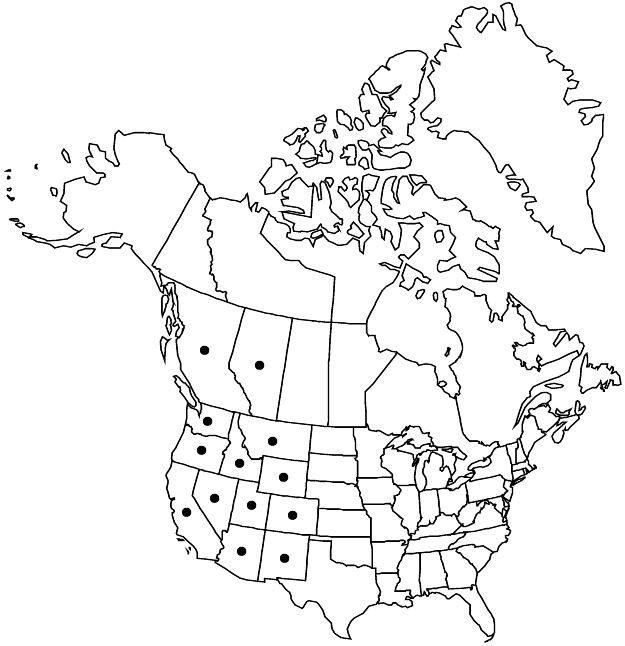Hypericum scouleri
Fl. Bor.-Amer. 1: 111. 1831.
Herbs erect or ascending, with rooting, creeping, branching base, 0.5–6.6(–8) dm. Stems: internodes usually weakly 2-lined, sometimes not lined, without black glands, rarely with reddish glands. Leaves usually spreading, rarely erect, sessile or (proximal) subpetiolate; blade oblong-elliptic or elliptic to triangular-ovate or (proximal) obovate, 12–28(–32) × 6–15(–18) mm, base subcordate to rounded or (proximal) cuneate, margins plane, apex obtuse to rounded, midrib with 4–5 pairs of branches, tertiary veins not densely reticulate, black glands intramarginal (± dense) and, rarely, (1–2) laminar (distal). Inflorescences cylindric to narrowly pyramidal, (1–)8–20-flowered. Flowers 6–15(–25) mm diam.; sepals not or scarcely imbricate, erect in fruit, ovate to lanceolate or narrowly oblong, unequal to subequal, 2.5–5.5 × 1–2 mm, apex acute to rounded; petals golden yellow, sometimes red-tinged, oblanceolate, 7–12 mm; stamens 50–90(–109); anther gland black; styles 2–8 mm. Capsules oblanceoloid, 6–10 × 3.5–6 mm, with longitudinal vittae. Seeds not carinate, (0.5–)0.7–0.8 mm; testa linear-reticulate. 2n = 16.
Phenology: Flowering summer (Jun–Sep).
Habitat: Wet meadows and banks, coniferous forests, screes, lake margins, marshes, tidal shores
Elevation: 0–2900 m
Distribution

Alta., B.C., Ariz., Calif., Colo., Idaho, Mont., Nev., N.Mex., Oreg., Utah, Wash., Wyo., Mexico (Baja California, Baja California Sur, Chihuahua, Coahuila, Durango, Sonora, Zacatecas).
Discussion
Some authors have included Hypericum scouleri in central Mexican H. formosum Kunth as a synonym, subspecies, or variety; the similarities in sepal form and glandularity between these species are due to convergence. Hypericum formosum is related to another Mexican species (H. oaxacanum R. Keller); the affinities of H. scouleri are with the H. attenuatum group from eastern Asia. Hypericum scouleri itself does occur in northern and central Mexico as far south as Michoacán, México, and Hidalgo, where it is known by the synonym H. simulans Rose.
J. M. Gillett and N. K. B. Robson (1981) treated the dwarf alpine form of Hypericum scouleri as subsp. nortoniae. Further work has revealed a range of intermediate forms between the two putative subspecies, which prevents their recognition. Likewise, the differentiation of a southern population (H. formosum subsp. formosum in the sense of C. L. Hitchcock) from a northern one [H. formosum subsp. scouleri (Hooker) C. L. Hitchcock] based on the broader, blunter, and less-glandular sepals in the latter, does not appear warranted.
Selected References
None.